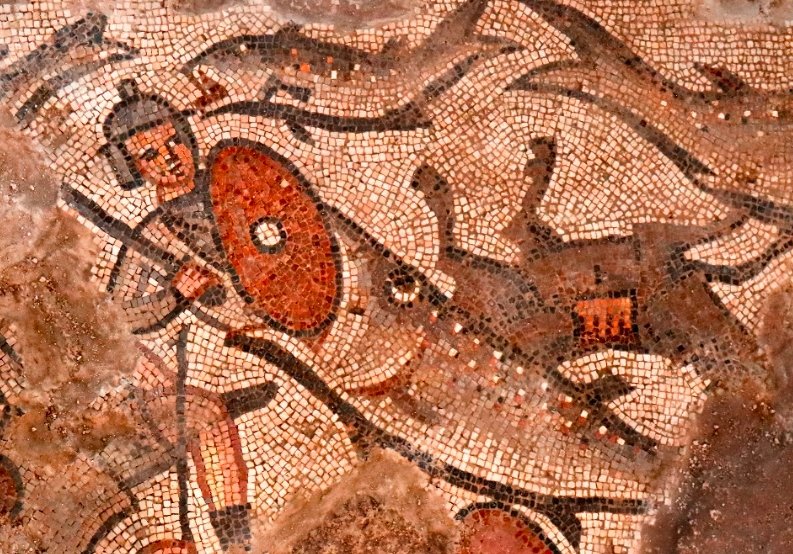In a remarkable archaeological discovery, a series of ancient mosaics depicting biblical scenes have been unearthed at the Huqoq synagogue in Israel’s Lower Galilee. Led by Professor Jodi Magness from the University of North Carolina at Chapel Hill, the Huqoq Excavation Project has revealed intricate mosaics dating back to the 5th century. These mosaics, made of tiny stone cubes, illustrate stories from the Bible, including the episode of Elim and scenes from the Book of Daniel. This find offers a unique glimpse into ancient Jewish art and religious life.
A Glimpse into Ancient Art
The Huqoq Excavation Project has been ongoing for over a decade, with each season revealing new and fascinating discoveries. The latest find includes a mosaic depicting the story of Elim, where the Israelites camped after leaving Egypt. This is the first known depiction of this episode in ancient Jewish art. The mosaic shows agricultural workers harvesting dates and a man carrying a water jar entering a city gate, providing a vivid portrayal of life in biblical times.
The mosaics are made of tesserae, tiny stone cubes that create detailed and colorful images. The craftsmanship and preservation of these mosaics are remarkable, offering insights into the artistic techniques and cultural expressions of the period. The discovery of these mosaics adds to the rich tapestry of historical artifacts found at Huqoq, each piece contributing to our understanding of ancient Jewish communities.

Professor Magness and her team have meticulously documented and preserved these mosaics, ensuring that they can be studied and appreciated by future generations. The mosaics not only depict biblical stories but also include inscriptions that provide context and enhance our understanding of the scenes portrayed.
Uncovering Biblical Stories
The mosaics at Huqoq depict a variety of biblical stories, each one offering a unique glimpse into the religious and cultural life of the time. One of the most striking mosaics discovered is the depiction of the Tower of Babel, a story from the Book of Genesis. This mosaic shows the tower in various stages of construction, with workers laboring to build the structure that would reach the heavens.
Another significant find is the mosaic illustrating the story of Jonah and the fish. This mosaic captures the moment Jonah is swallowed by the fish, a dramatic and pivotal event in the biblical narrative. The detailed depiction of the fish and the surrounding sea highlights the artistic skill and creativity of the mosaic makers.
The Huqoq mosaics also include scenes from the Book of Daniel, such as the vision of the four beasts representing different kingdoms. These mosaics provide a visual representation of the apocalyptic themes found in the biblical text, offering a unique perspective on ancient Jewish eschatology.
The Significance of the Huqoq Mosaics
The discovery of these mosaics is significant not only for their artistic value but also for what they reveal about the historical and cultural context of the time. The Huqoq mosaics provide evidence of the diverse and rich traditions within ancient Jewish communities. They show that these communities engaged with biblical stories in a visual and artistic manner, creating works that were both religiously meaningful and artistically impressive.
The mosaics also highlight the connections between different regions and cultures. The depiction of the Tower of Babel, for example, reflects influences from both Jewish and broader Near Eastern artistic traditions. This cross-cultural exchange is evident in the stylistic elements and themes present in the mosaics.
The ongoing excavations at Huqoq continue to uncover new findings, each one adding to our understanding of the past. The work of Professor Magness and her team is crucial in preserving these artifacts and making them accessible for study and appreciation. The Huqoq mosaics are a testament to the enduring legacy of ancient Jewish art and its significance in the broader context of world history.












